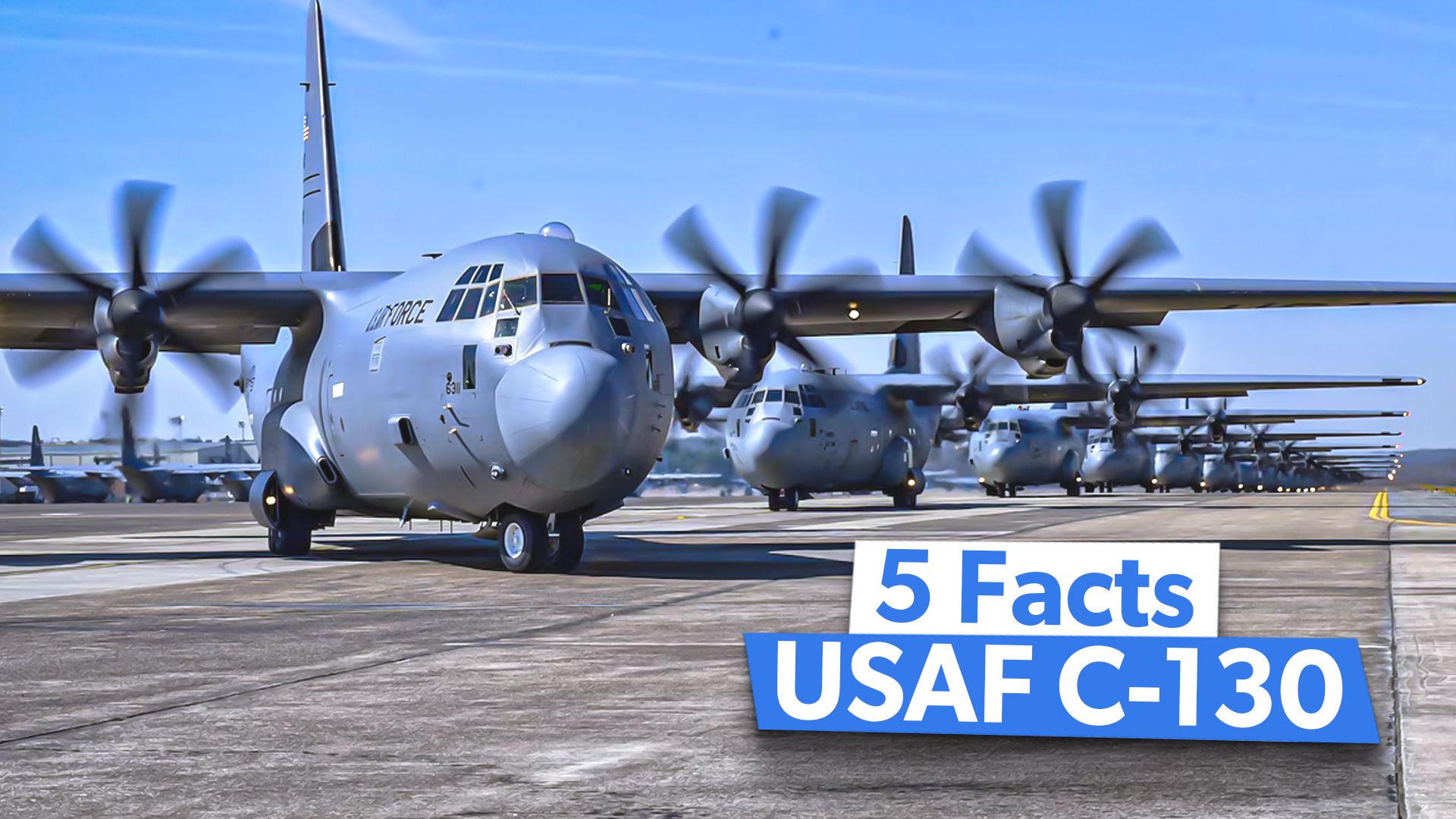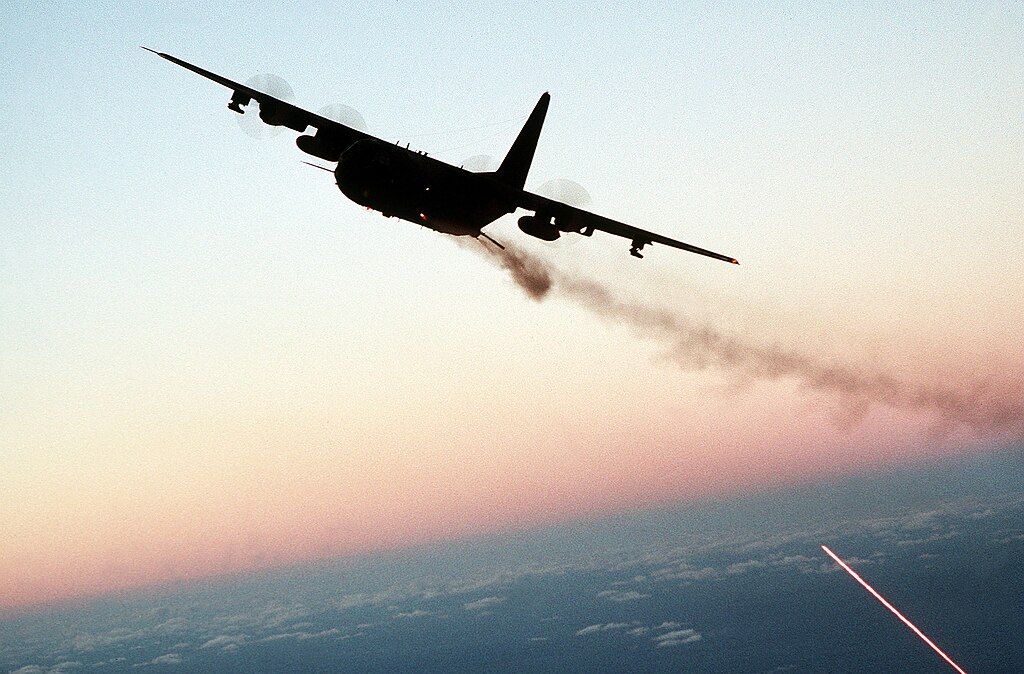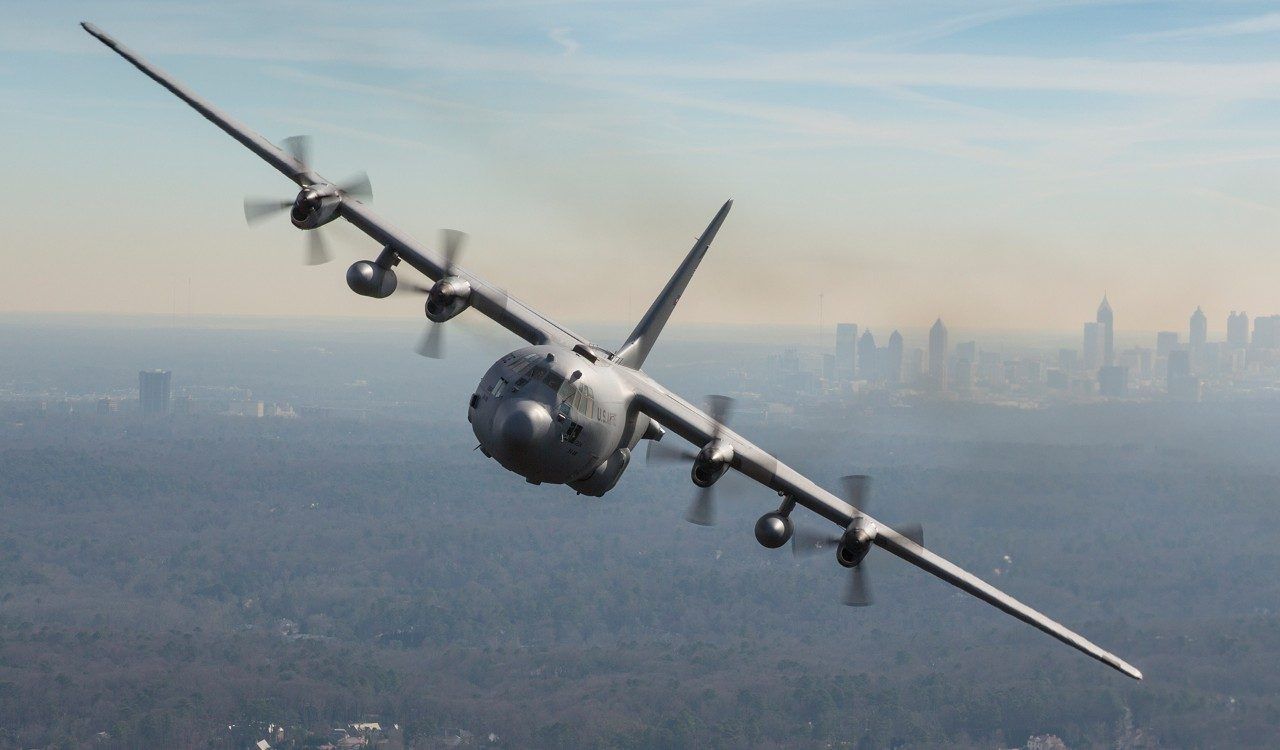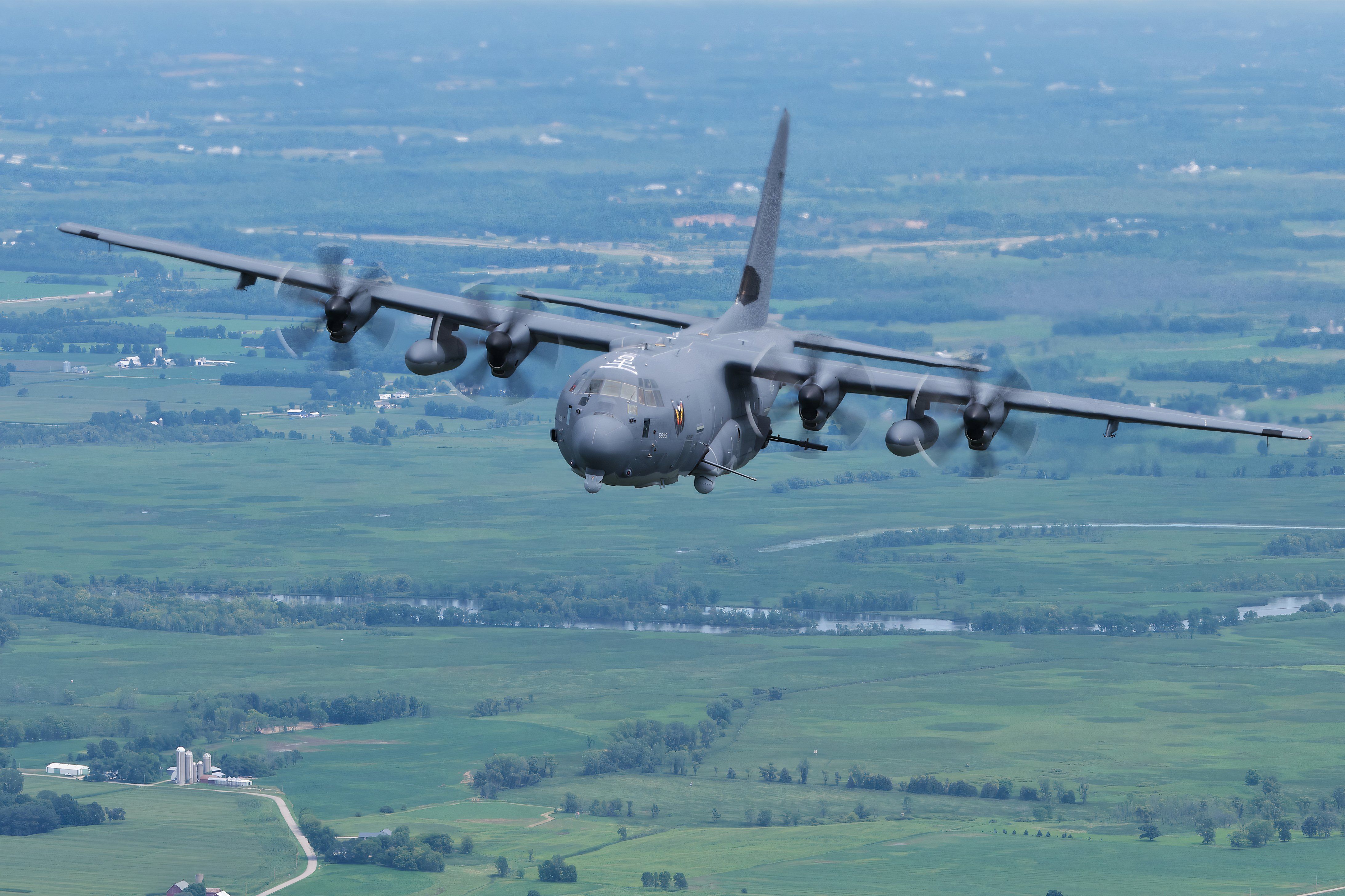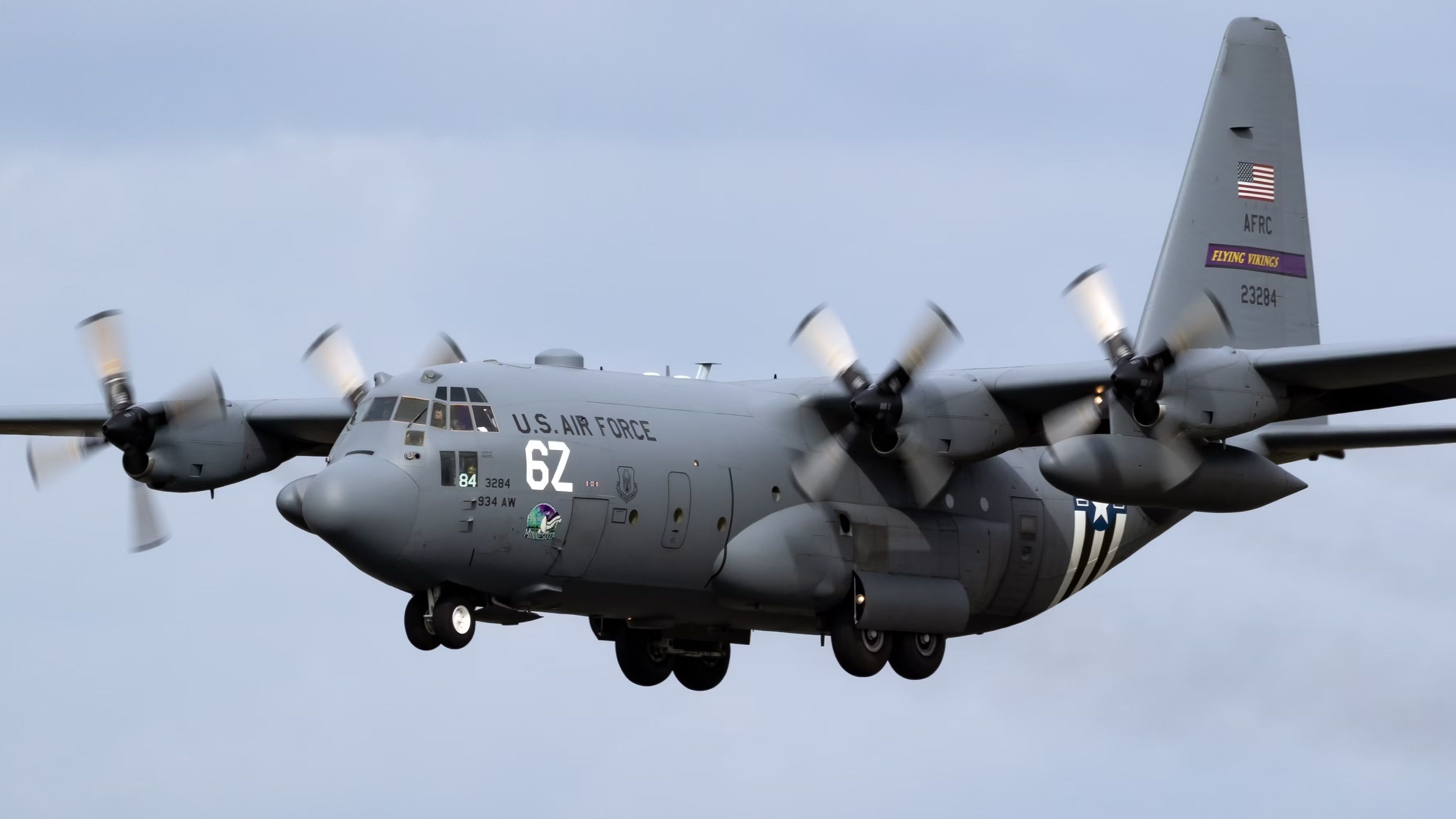Summary
- The USAF began acquiring C-130 aircraft in 1956.
- The C-130J, the latest variant, was first delivered to the Air Force in 1999.
- C-130s can be used for a variety of missions due to their versatility.
The Lockheed C-130 Hercules is a four-engine turboprop military transport aircraft designed and developed in the late 1940s. More than seventy years after the first prototype took flight, the C-130 remains in production. The United States Air Force uses four different variants of the aircraft, serving a range of military and humanitarian operations.
The versatile airframe is used for search and rescue operations, weather reconnaissance, aerial refueling, and maritime patrol, among others. This article highlights fast facts about the USAF variants.
1
The USAF acquired its first C-130 68 years ago
C-130A: Delivered to the USAF in 1956
- Original design specification by USAF: 1951
- First flight: August 1954
- Entered USAF service: December 1956
- Total C-130A acquired by the USAF: 219
The Lockheed C-130 goes back over seven decades to when the company began the design of military transport aircraft. The USAF issued the original design specification to the manufacturer in 1951, marking 73 years of production and serviceability with the Air Force. The initial production model featured four Allison T56-A-11 or A-9 turboprop engines.
Photo: VanderWolf Images l Shutterstock
The USAF ordered a total 219 examples of the original C-130A, of which the deliveries began in December 1956. A few years later, Lockheed introduced the C-130B variant with Allison T56-A-7 engines. The Air Force acquired 134 examples, with the first delivery in May 1959. The type remains in production today, over seven decades after its first flight.
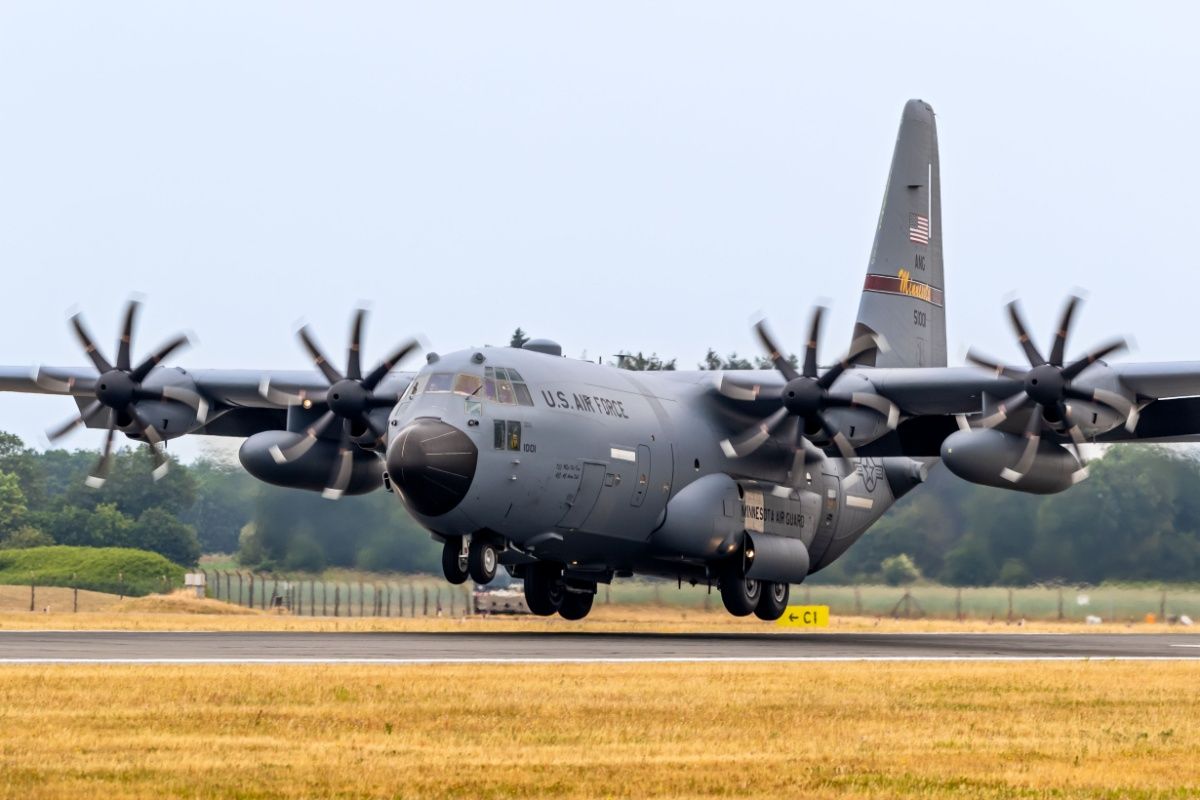
Related
5 Humanitarian Efforts Supported By The C-130H Hercules
C-130H Hercules is not only the logistical workhorse of Air Forces; it is often the workhorse of humanitarian missions around the world.
2
An ideal airlifter for oversized cargo
Cargo hold: Length: 56 ft (16.9 m), Width: 9 ft 11 in (3.02 m), Height: 9 ft (2.74 m)
Rear ramp: Length: 123 inches (3.12 m), Width: 119 in (3.02 m)
The Lockheed C-130 Hercules features an aft loading door and ramp, enabling the use of a wide range of oversized cargo. From standard pallet-size cargo to six-wheeled armored trucks and utility helicopters, the C-130 can take it all. Lockheed Martin states that the aircraft is easily and rapidly reconfigurable for various operations.
- C-130E/H/J: 6 pallets or 72 litters or 16 CDS bundles or 90 combat troops or 64 paratroopers, or a combination of any of these up to the cargo compartment capacity or maximum allowable weight.
- C-130J-30: 8 pallets or 97 litters or 24 CDS bundles or 128 combat troops or 92 paratroopers, or a combination of any of these up to the cargo compartment capacity or maximum allowable weight.
This ability makes it highly versatile, particularly when serving across multiple divisions. According to the Air Force,
“Additionally, the C-130 can be rapidly reconfigured for the various types of cargo such as palletized equipment, floor-loaded material, airdrop platforms, container delivery system bundles, vehicles and personnel or aeromedical evacuation.”
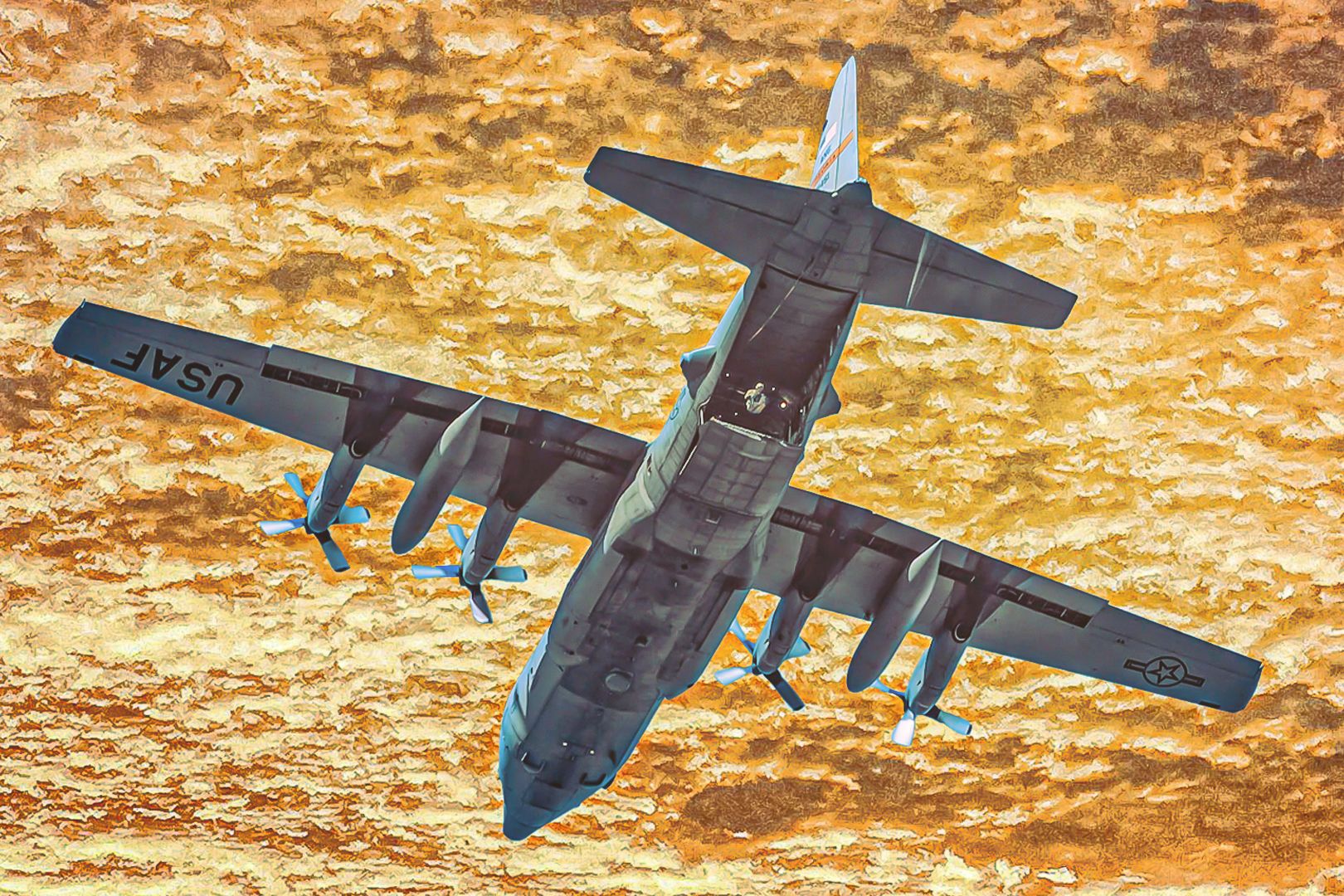
Related
How Does the C-130 Hercules Adapt To Various US Military Mission Types?
We’ve previously discussed the versatility of the C-130. Now we discuss *how* it adapts and demonstrates its versatility so readily.
3
Precise airdrops
C-130E/H/J: 42,000 lbs (19,090 kg) of loadC-130J-30: 44,000 lbs (19,958 kg) of load
| Cargo compartment | Length |
|---|---|
| C-130E/H/J | 41 ft (12.5 m) |
| C-130J-30 | 56 ft (16.9 m) |
The United States Air Force (USAF) utilizes its C-130s in a variety of airdrop missions. Whether it is a weaponry and equipment drop to a strategic location, a humanitarian aid drop, or an aerial firefighting mission, the C-130 can precisely drop the payload through the use of parachutes.
Photo: Lockheed Martin
Low-altitude airdrops can be performed during daylight and in the dark. For surveillance and intelligence missions, it is common for the air forces to airdrop specialized instruments, including sensors (generally to enemy territories), to collect sensitive data and acquire information.
The additional 15 feet of cargo space on the USAF C-130J-30 increases usable space, further enhancing airdrop operations.
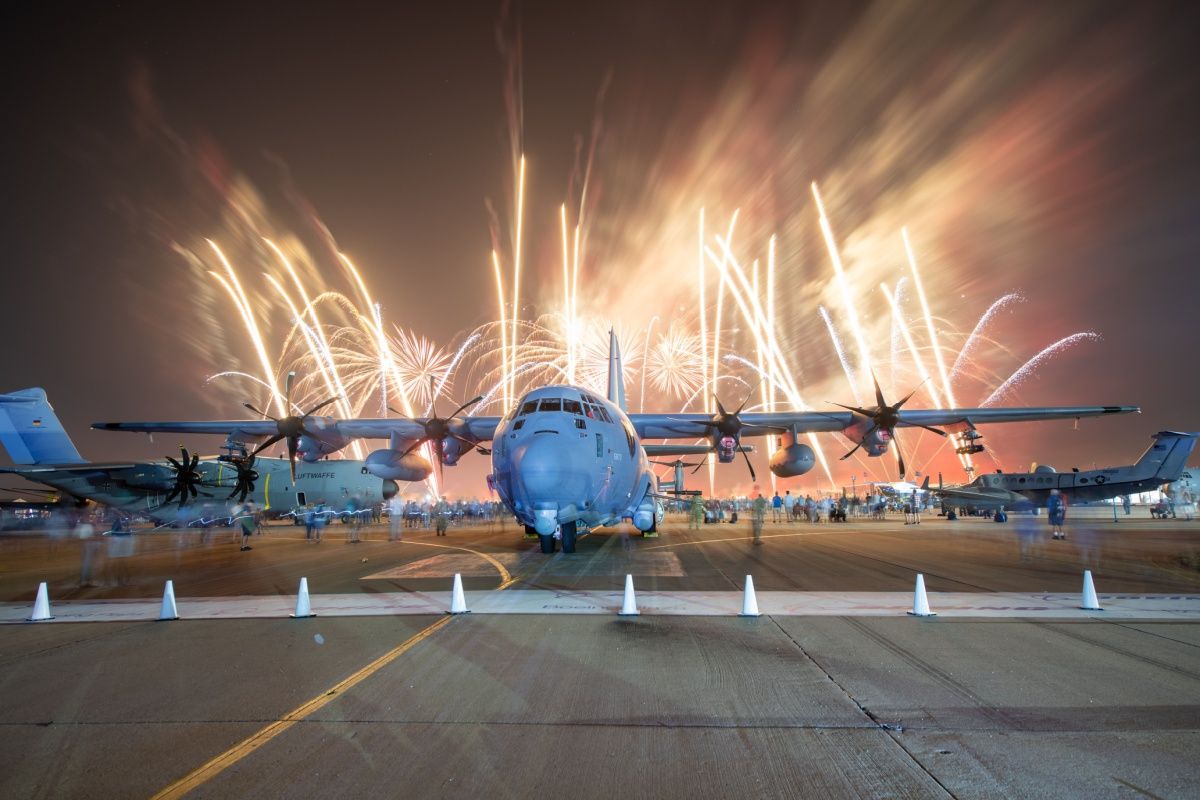
Related
US Air Force AC-130J Ghostrider Arrives In South Korea For Joint Exercise
The US Air Force deployed a gunship as part of its latest joint exercises with South Korea as the North launched another failed missile test.
4
The high-performance C-130J
First delivery to the Air Force: February 1999
| USAF C-130 models | Date deployed |
|---|---|
| C-130A | December 1956 |
| C-130B | May 1959 |
| C-130E | August 1962 |
| C-130H | June 1974 |
| C-130J | February 1999 |
The latest C-130 variant, the C-130J, acquired by the USAF in 1999, features improvements in almost all areas of design, capabilities, and performance. Four Rolls-Royce AE2100D3 engines produce 18,800 kW of shaft horsepower combined. The aircraft has a shorter takeoff and landing distance than the older models.
Photo: USAF
According to the Air Force,
“The latest C-130 to be produced, the C-130J, entered the inventory in February 1999. With the noticeable difference of a six-bladed composite propeller coupled to a Rolls-Royce AE2100D3 turboprop engine, the C-130J brings substantial performance improvements over all previous models. The C-130J-30, a stretch version with a 15-foot fuselage extension, increases the capabilities even more. To date, the Air Force has taken delivery of 121 C-130J aircraft from Lockheed-Martin Aeronautics Company.”
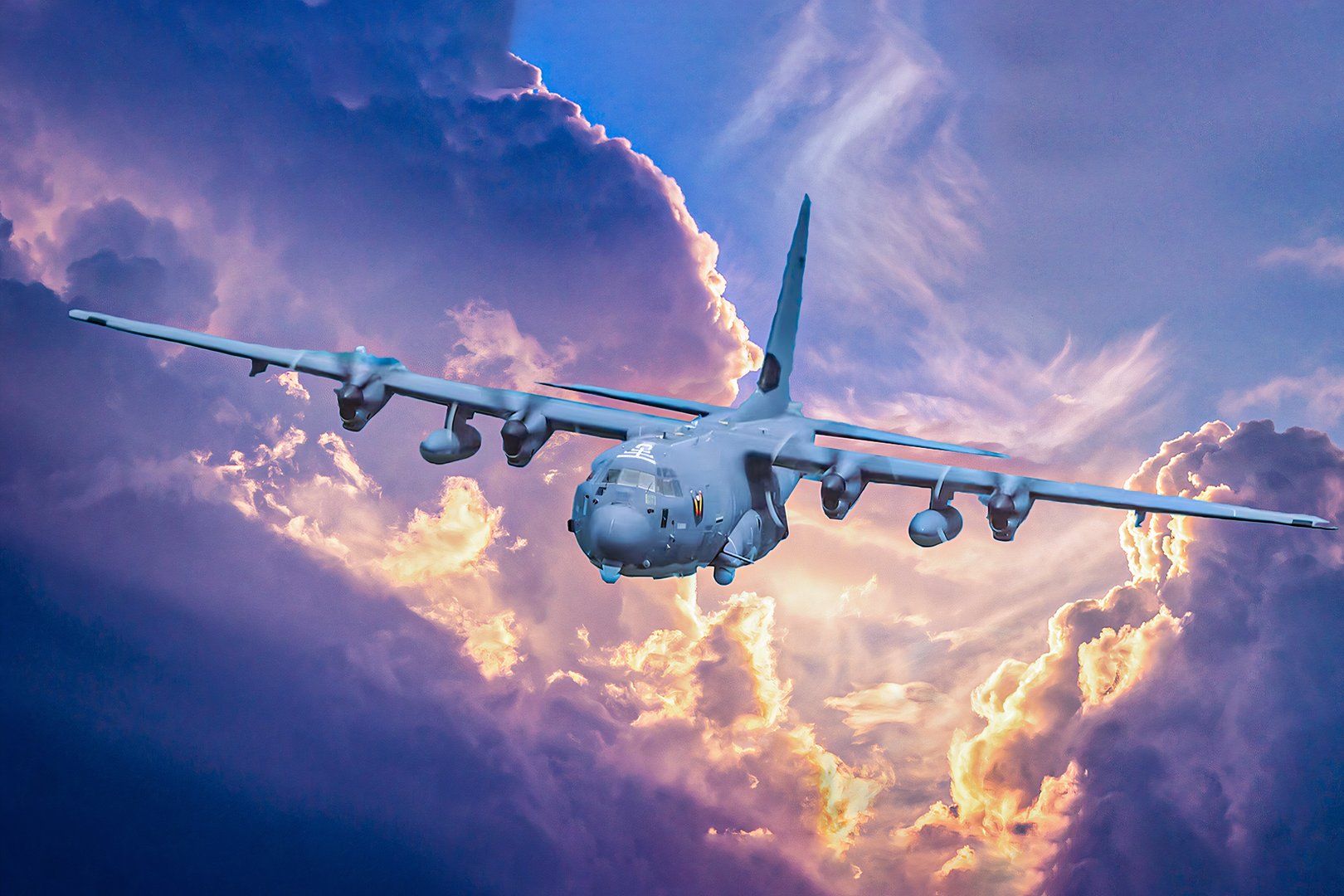
Related
US Air Force AC-130J Ghostrider: What To Know About The Biggest Gun In The West
The AC-130J Ghostrider reigns as the king of modern gunships and will provide massed, concentrated fire for ground support for years to come.
5
Multinational active duty locations
Active-duty C-130s are located outside of the United States too
| USAF C-130s (all variants) | Locations |
|---|---|
| Active duty aircraft | Dyess Air Force Base, Texas; Little Rock AFB, Arkansas; Ramstein Air Base, Germany; and Yokota AB, Japan. |
| Reserve locations | Dobbins Air Reserve Base, Georgia; Keesler AFB, Mississippi; Maxwell AFB, Alabama; Minnesota-St. Paul Joint Air Reserve Station, Minnesota; Peterson AFB, Colorado; and Youngstown ARS, Ohio. |
The USAF has used several variants of the popular C-130 Hercules transport aircraft. The USAF has commissioned its active duty C-130 aircraft (all variants) both in the US and overseas. Apart from Dyess Air Force Base in Texas and Little Rock AFB in Arkansas, the active duty C-130s reside at Ramstein Air Base in Germany and Yokota Air Base in Japan.
Photo: VanderWolf Images | Shutterstock
All reserve locations for the C-130 fleet are within the US, at various Air Force Bases across the country. The USAF states that it operates nearly 145 C-130s in the active force, 180 in the Air National Guard, and approximately 100 in the Air Force Reserve.
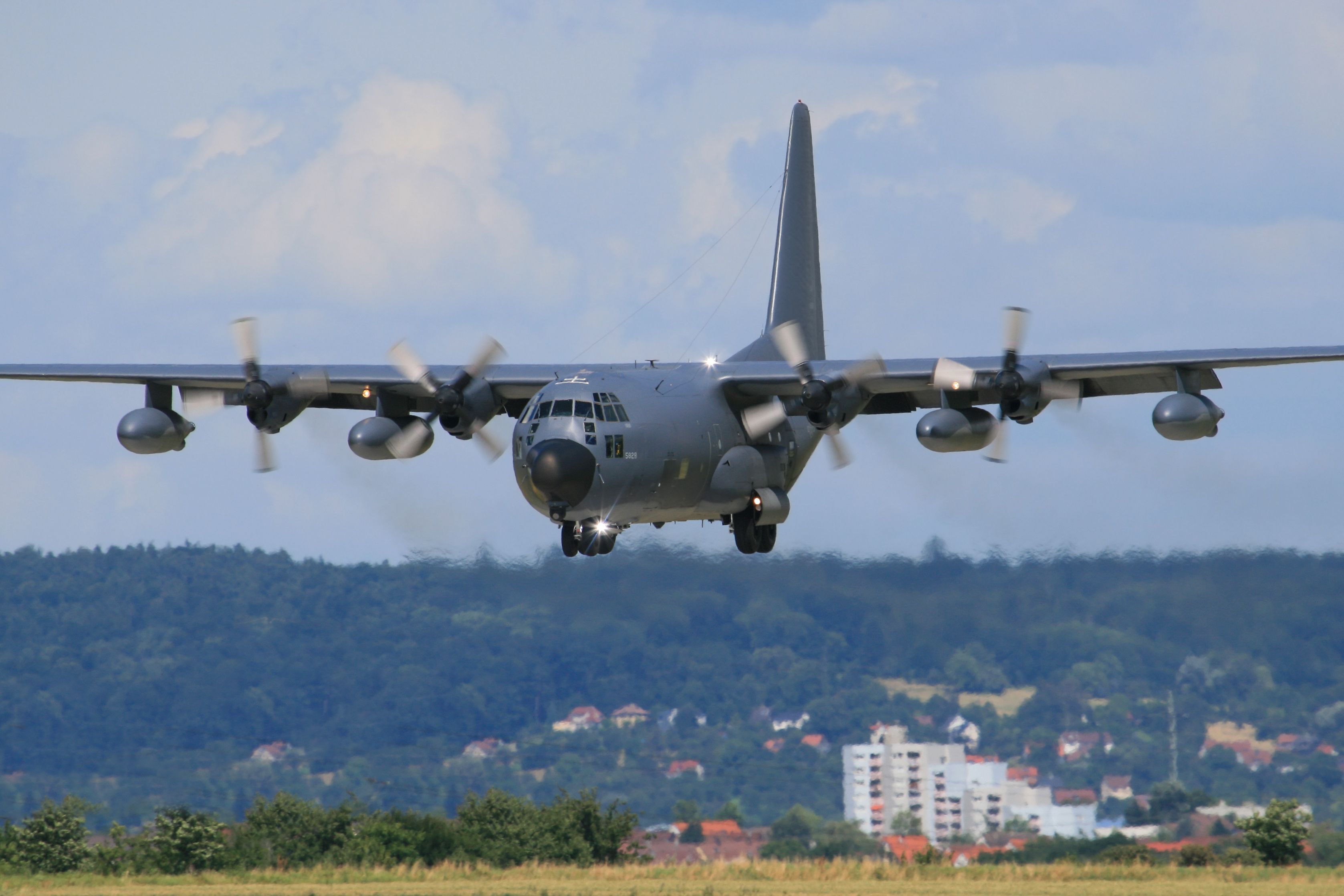
Related
Throwback: When The US Navy Landed A Lockheed C-130 Hercules On An Aircraft Carrier
The US Navy once conducted tests to determine the feasibility of using the C-130 at sea.
What are your thoughts on the fast facts of the Lockheed C-130 Hercules operated by the USAF? Share your views in the comments section.

